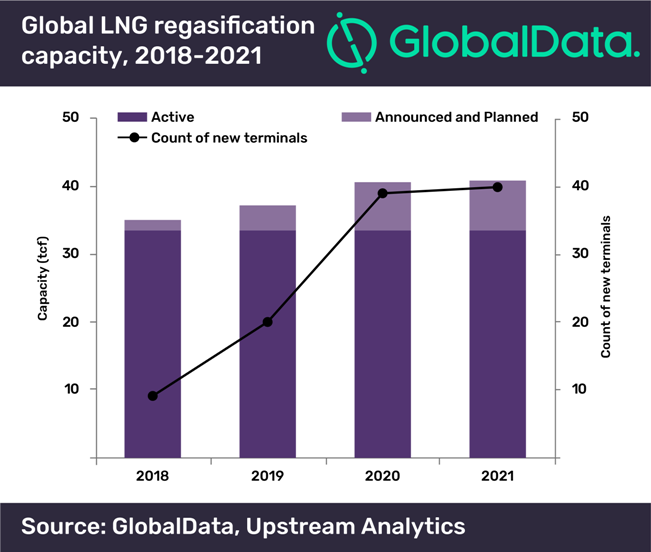Japan has the highest LNG regasification capacity globally with 9.6 tcf in 2018, with South Korea and China following with 4.9 tcf and 3.2 tcf respectively, according to GlobalData, one of the leading data and analytics companies across the world
Japan accounts for 28.3 per cent of the total global LNG regasification capacity. The country has 35 active LNG regasification terminals. Presently there is a planned terminal, Soma, which is set to start operations for the period of 2018 to 2021.
South Korea contributes about 14.5 per cent of the global LNG regasification capacity in 2018. The country has six active LNG regasification terminals. South Korea is expected to add a capacity of 17.1 tcf from a planned terminal during the period, 2018 to 2021.
The third major contributor to the global LNG regasification capacity is China with 3.2 tcf, which is 9.2 per cent of the global LNG regasification capacity in 2018. It has 16 active terminals. China is expected to add a capacity of 2.1 tcf from 17 planned terminals during 2018 to 2021.

Spain is the fourth largest contributor to the global LNG regasification capacity with 2.2 tcf, which accounts to 6.5 per cent of the global total. Currently there are two planned projects that would start operations for the duration of 2018 to 2021.
The UK contributes about two tcf to the global LNG regasification capacity in 2018, which is about six per cent of the global LNG regasification capacity. Presently there is a planned project that would start operations during 2018 to 2021.
At present France and India contribute about 1.7 tcf each, which is about five percent of the global LNG regasification capacity. India is expected to add a capacity of 4.6 tcf from 19 planned and announced terminals throughout 2018 to 2021.
Turkey and Mexico collectively contribute about 2.2 tcf, which is 6.4 per cent of the global LNG regasification capacity. An announced terminal in Turkey is expected to add a capacity of 0.2 tcf during 2018 to 2021.
The US has 6.6 tcf of installed regasification capacity as of 2018, with 10 terminals. These can function as bidirectional terminals, originally built for liquefaction but expanded with liquefaction capacity, thus capable of both importing and exporting LNG.









































